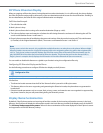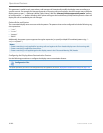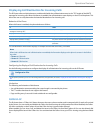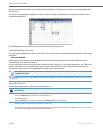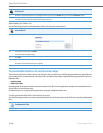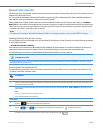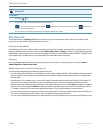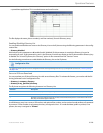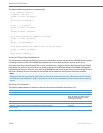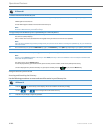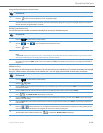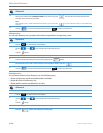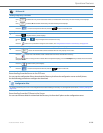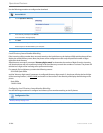
Operational Features
41-001343-02 REV04 – 05.2014 5-229
a spreadsheet application. This is an administrator and user function.
The file displays the name, phone number(s), and line number(s) for each Directory entry.
Enabling/Disabling Directory List
You can enable and disable user access to the Directory List on the IP phones using the following parameters in the config-
uration files:
• directory disabled
Valid values for this parameter are 0 (enabled) and 1 (disabled). If this parameter is set to 0, the Directory List can be
accessed by all users. If this parameter is set to 1, the Directory List does not display on the IP phone and the Directory key
is disabled. On 3-Line LCD phones, the "Directory" option is also removed from the "Services" menu.
Use the following procedures to enable/disable the Directory List on the IP phones.
Server to IP Phone Download
You can populate your IP phone Directory List with server directory files. To activate this feature, you need to add the fol-
lowing parameters to the configuration files:
• directory 1: company_directory
• directory 2: my_personal_directory
The IP phone recognizes the following characters in a Directory List:
A valid directory entry has a name, a URI number, and optional line number, and an optional mode attribute, all separated
by commas. If a line number is not present, the entry is assigned to line 1. If a mode attribute (public or private) is not
present, the entry is assigned to "Private".
Configuration Files
For specific parameters you can set in the configuration files for enabling/disabling the Directory List, see Appendix A, the section, “Directory Settings”
on pageA-107.
Character Description
’#’ Pound character; any characters appearing after the # on a line are treated as a comment
’,’ Comma character; used to separate the name, URI number, line, and mode fields within each directory entry.
’"’ Quotation mark; when pound and comma characters are found between quotes in a name field or URI number
field, they are treated as regular characters.



